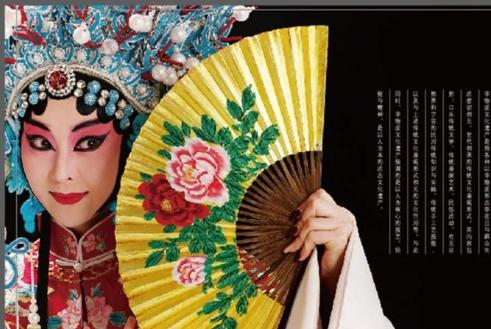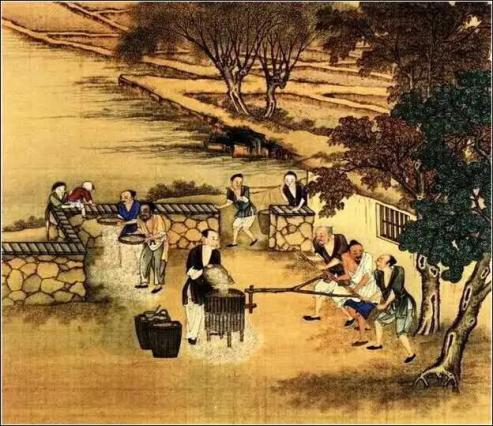Intangible cultural heritage knowledge popularization
June 13th is the "Cultural and Natural Heritage Day" in 2020. The theme of this year’s heritage day is "Non-genetic inheritance of healthy life", and the slogan is "Non-genetic inheritance of healthy life for thousands of families", "Non-legacy transmission of health is always accompanied" and "inheriting cultural treasures to protect the natural home". So how much do you know about intangible cultural heritage? Let’s get to know each other ~

1. What is intangible cultural heritage?
.
Intangible cultural heritage refers to all kinds of traditional cultural expressions (such as folk activities, performing arts, traditional knowledge and skills, and related appliances, objects, handicrafts, etc.) and cultural spaces that are closely related to people’s lives. Intangible cultural heritage refers to the folk cultural and artistic heritage with national historical accumulation and wide representation, which is mainly oral.
2. What is the scope of intangible cultural heritage?
A. Oral traditions and expressions and language as a cultural carrier;
B. Traditional performing arts (including opera, music, dance, folk art, acrobatics, etc.);
C. social customs, etiquette and festivals;
D. knowledge and practice about nature and the universe;
E. traditional handicraft skills.
F. Cultural space related to the above expressions.
Intangible cultural heritage is passed down by human beings orally or by actions, which has national historical accumulation and extensive and outstanding representative folk cultural heritage. It was once known as the "living fossil" of history and culture and the "back of national memory".

3. What are the characteristics of intangible cultural heritage?
The biggest feature of intangible cultural heritage is that it is not divorced from the special way of life and production of the nation, and it is a vivid manifestation of national personality and aesthetic habits. It exists on the basis of human beings, with sound, image and skills as the means of expression, and is continued by word of mouth as a cultural chain, which is the most fragile part of "living" culture and its tradition. Therefore, for the process of intangible cultural heritage inheritance, human inheritance is particularly important.
4, the intangible cultural heritage classification and code:
It can be divided into ten categories: folk literature (I), traditional music (II), traditional dance (III), traditional drama (IV), folk art (V), traditional sports, entertainment and acrobatics (VI), traditional art (VII), traditional skills (VIII) and traditional medicine (VII).
5. Guidelines and principles of intangible cultural heritage protection:
To protect intangible cultural heritage, we should pay attention to its authenticity, integrity and inheritance, implement the policy of "protection first, rescue first, rational utilization, inheritance and development", and follow the principle of "government-led, social participation, long-term planning and steady implementation".

6. Standard requirements for applying for intangible cultural heritage projects:
1. Real existence, with outstanding historical, literary, artistic and scientific value. 2. Show the cultural creativity of the Chinese nation and reflect the excellent traditional culture of the Chinese nation. 3. It has a long historical tradition and a clear inheritance vein, and it has the characteristics of being passed down from generation to generation and living in a certain group (generally, it is required to be passed down and developed continuously in the local area for more than 100 years). 4. It has distinct regional characteristics and has great influence in the local area. 5. It is typical and representative of Weishui culture. 6. The state of survival is endangered and it is urgent to protect it. 7. There are qualified project protection units. 8. Meet other reporting requirements of the cultural department.
7. Materials to be provided for applying for intangible cultural heritage projects:
1. Project declaration: including project introduction, basic information, historical origin, characteristic value, inheritance pedigree, project management, protection unit, protection plan, etc. (There are standard forms).
2. Auxiliary materials: including audio and video materials, certification materials, power of attorney, commitment letter and other relevant materials.
8. What is cultural heritage?
Cultural heritage includes material and non-material categories. Materials include: immovable cultural relics such as ancient sites, ancient tombs, ancient buildings, cave temples, stone carvings, murals, and important historical objects, works of art, documents, manuscripts, and other movable cultural relics; And famous historical and cultural cities, blocks and villages. Intangible categories include: oral traditions, folk activities and ceremonial festivals, traditional handicrafts, and related cultural spaces.
The second Saturday of June every year is designated as "Cultural Heritage Day".

9. Conditions for application of intangible cultural heritage
There are three basic conditions for declaration, one is artistic value, the other is in an endangered state, and the other is a complete protection plan.
10. Significance of intangible cultural heritage
According to the definition in the Convention for the Protection of Intangible Cultural Heritage adopted by UNESCO, "intangible cultural heritage" refers to various practices, performances, forms of expression, knowledge systems and skills and related tools, objects, handicrafts and cultural sites that are regarded by various groups, groups and sometimes individuals as their cultural heritage. With the changes of their environment, the relationship with nature and historical conditions, various groups and groups constantly innovate this intangible cultural heritage handed down from generation to generation, and at the same time give them a sense of identity and history, thus promoting cultural diversity and stimulating human creativity.
The number of world cultural heritages can reflect the diversity and profundity of the history and culture of a certain region or country. If the material and intangible cultural heritages are rated as world cultural heritages, they will not only attract the world’s attention, but also be better protected and passed down.
UNESCO believes that intangible cultural heritage is an important factor in determining cultural identity, stimulating creativity and protecting cultural diversity, and plays a vital role in mutual tolerance and coordination among different cultures. Therefore, in 1998, UNESCO adopted a resolution to establish intangible cultural heritage selection.
Protect cultural heritage
Guarding spiritual home


Poyang county Rong media center
PYRMTZX
Beauty is in Poyang
Official WeChat Platform of Propaganda Department of Poyang County Committee of CPC
Editor: Jiang Yue Editor: Cai Ying Review: Cao Haipeng
▼
For more wonderful recommendations, please pay attention to us.
▼
authority
·
tall
product
·
Zhenmei
Original title: "Intangible Cultural Heritage Knowledge Science"
Read the original text